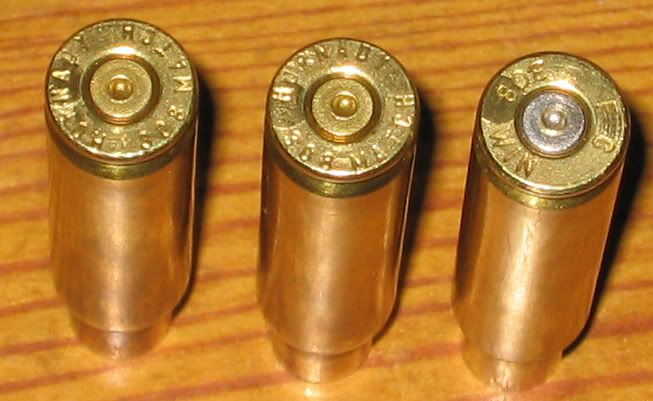elkeater2
Handloader
- Jan 5, 2009
- 761
- 85
I've been reloading for a lonng time, and follow standard load development procedures. Never had to learn anything the hard way yet. What gets me is this: How do the ammunition manufacturers come up with the loads they do - which are often quite close to the max velocity and pressure data we see in our loading manuals? Some, like the Hornady 'light magnums' even exceed what we can do with available powders, etc.
We know that changes in seating depth, primer type, brass,powder lot, bullet brand, etc. can tip the balance as we approach the legendary maximum for our own load/rifle combo. Yet it seems that the ammo we can buy over the counter can produce the same velocity results we approach with so much caution. Do they take a sample group of production rifles and check for problems?
Since they do get it done somehow, it makes me wonder why the load manual producers can't do essentially the same thing - develop, test, and document some "one size fits all....pretty well" loads. You want 2925 fps out of your 30-06 with a standard lead core 150 gr bullet? Then use this load with confidence: show all the exact details for primer, brass, COL, powder, seating depth, and bullet. I enjoy tweaking and developing a lot -but there are times it would be nice to crank out a couple hundred prairie dog loads without making three trips to the range and shooting up 20-30 rounds doing workup development.
So how do they do it?
Thanks everyone!
We know that changes in seating depth, primer type, brass,powder lot, bullet brand, etc. can tip the balance as we approach the legendary maximum for our own load/rifle combo. Yet it seems that the ammo we can buy over the counter can produce the same velocity results we approach with so much caution. Do they take a sample group of production rifles and check for problems?
Since they do get it done somehow, it makes me wonder why the load manual producers can't do essentially the same thing - develop, test, and document some "one size fits all....pretty well" loads. You want 2925 fps out of your 30-06 with a standard lead core 150 gr bullet? Then use this load with confidence: show all the exact details for primer, brass, COL, powder, seating depth, and bullet. I enjoy tweaking and developing a lot -but there are times it would be nice to crank out a couple hundred prairie dog loads without making three trips to the range and shooting up 20-30 rounds doing workup development.
So how do they do it?
Thanks everyone!





